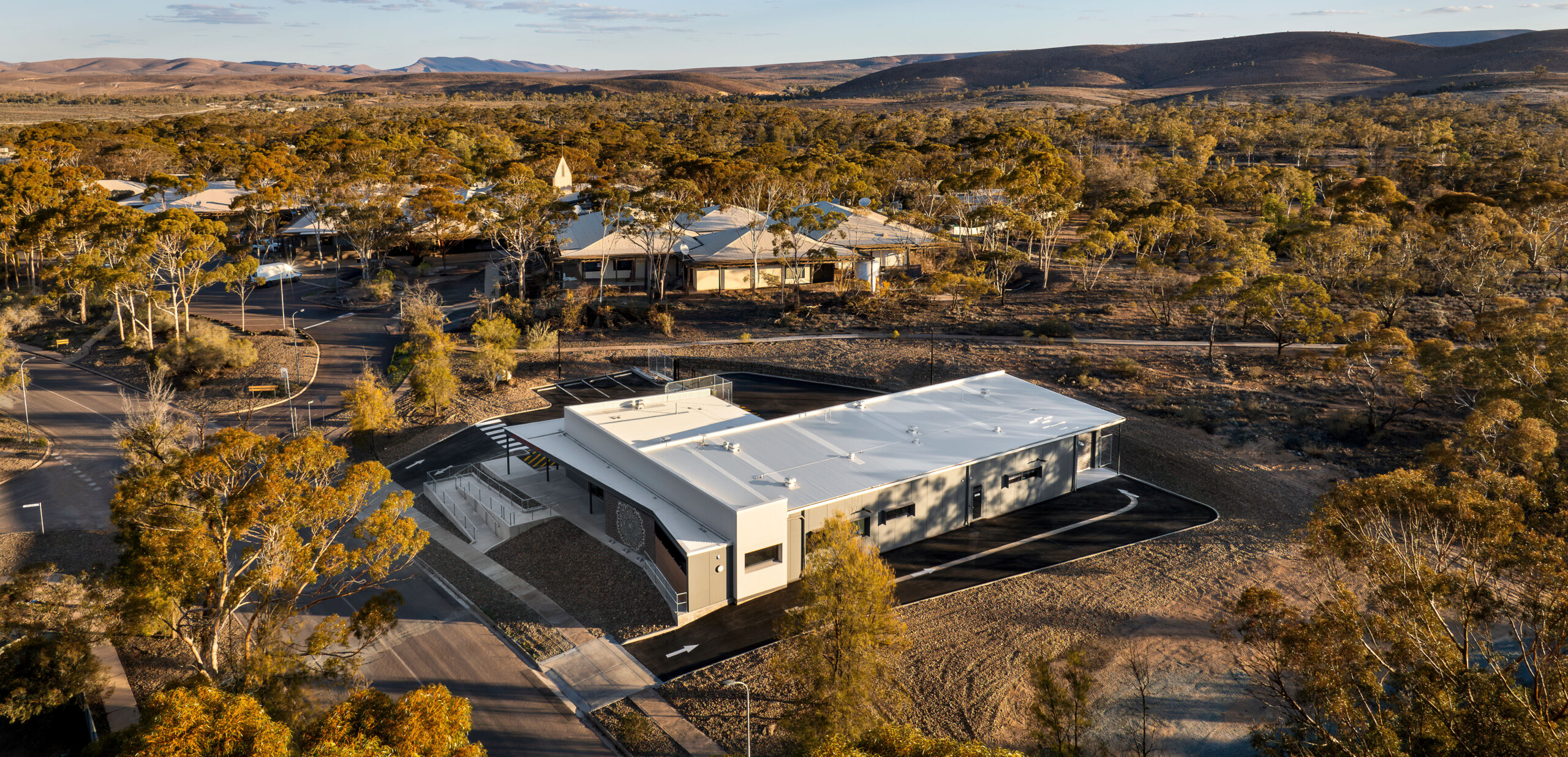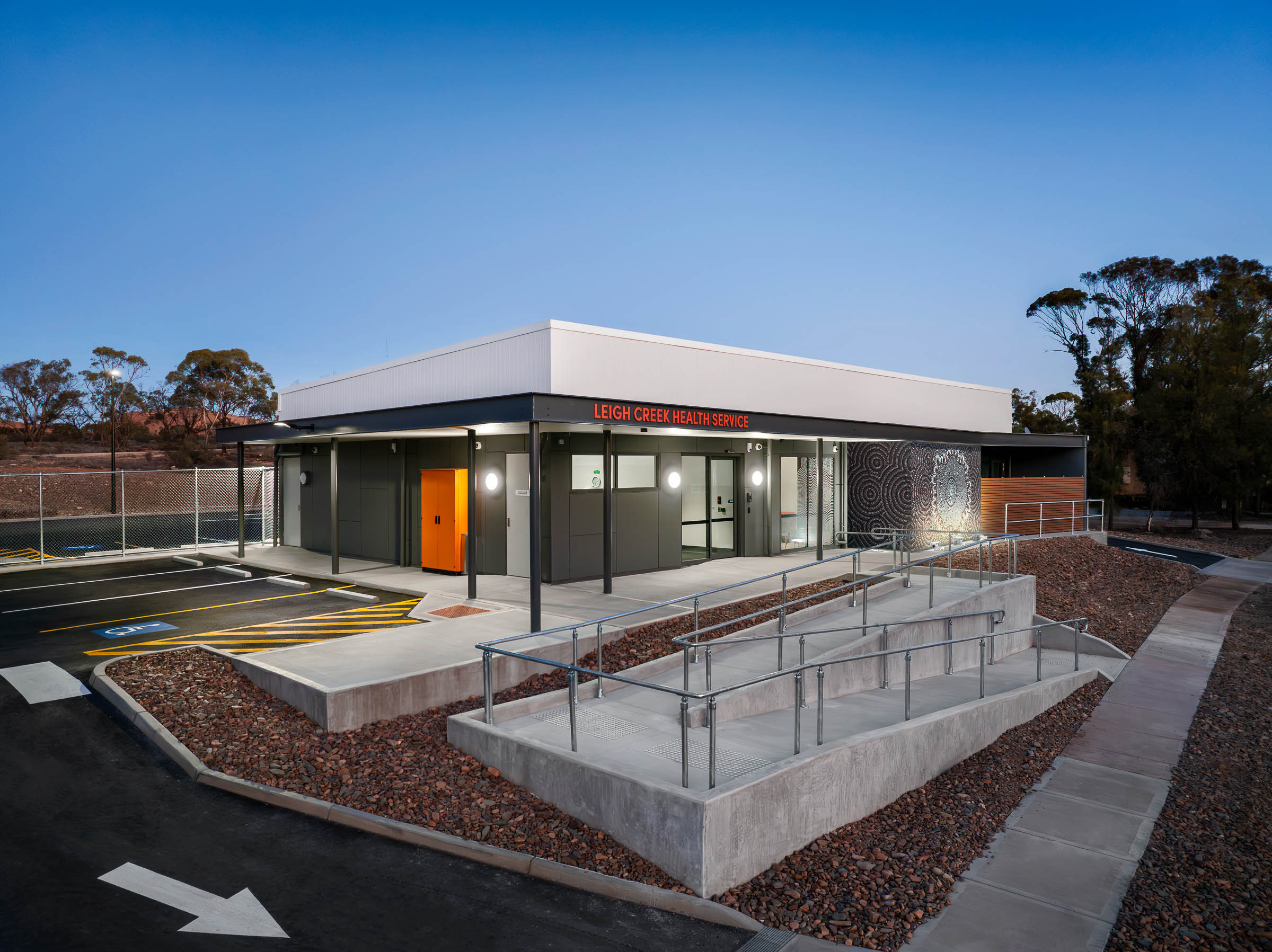
Richard Stafford
SA Architect Registration No. 2297

The Leigh Creek Health Centre is a vital community resource, providing essential health services to the township and surrounding Flinders Ranges. In this remote location, it ensures residents have timely access to care, from routine consultations to urgent and emergency treatment.
In response to Leigh Creek’s declining population after the mine closure, the South Australian Government funded a new, fit-for-purpose health clinic for the smaller, remote community. The existing facility had become unsuitable due to its poor condition, asbestos, and inefficient use of space, creating the need for a modern, safe replacement.
The clinic is nurse-led, supported by short-term visiting practitioners using dedicated consultation spaces. It provides outpatient care and timely access to health services, with pathways for patients requiring extended or specialised care in Adelaide.
Delivering a modern, flexible facility
The completed project successfully delivered on the following objectives:

Grounded in country and community
The design of the Leigh Creek Health Clinic was shaped by a deep commitment to cultural responsiveness and community ownership, ensuring the facility is meaningfully grounded in Country. From the outset, the project sought to reflect the identity, traditions, and values of the Leigh Creek community, fostering a strong sense of belonging and pride.
Key design strategies included:
A highlight of the project is the commissioned artwork by local Adnyamathanha artist Juanella McKenzie, engaged by the Department for Health and Wellbeing (DHW) and the Flinders and Upper North Local Health Network (FUNLHN). Juanella’s piece, titled ‘Healing’, serves as a powerful visual centrepiece that celebrates the region’s people, land, and cultural healing traditions. The artwork is prominently featured on the building’s façade and is also represented on graphic film across both external and internal windows, reinforcing the clinic’s connection to Country and strengthening community ownership.
Traditionally, the smoking ceremony in Adnyamathanha culture is used for welcoming, ceremony and healing, which is at the centre of this artwork. The community families are the circles spread across our beautiful region. The health staff care for our community, keeping us strong and healthy, and the dots represent the country, our country that we all call home.
Juanella McKenzie
Adnyamathanha Artist
Primary functional spaces
Secondary supporting spaces
Where culture, care and sustainability meet
The new clinic’s design balances functionality, inclusivity, and sustainability. It provides flexible, efficient spaces adaptable to changing service and community needs. The layout ensures clear legibility, intuitive wayfinding, universal access, and cultural safety. Passive design strategies enhance comfort and respond to the site’s character, supporting cultural connection and community ownership, while minimising environmental impact during construction and operation.

An innovative modular approach
To address the challenges of building in a remote location, DHW, FUNLHN, and DIT adopted a modular, prefabricated approach for the Leigh Creek Health Clinic.
This strategy suited the clinic’s scale, enabling efficient transport, shorter on-site construction, lower environmental impact, improved quality, and alignment with local capabilities. It also delivered cost savings, better material and waste management, future scalability, and standardisation across regional clinics to support equity. The clinic exemplifies a culturally respectful, community-driven model, providing essential services closer to home through resilient design and collaborative engagement.

SA Architect Registration No. 2297

SA Architect Registration No. 2785
